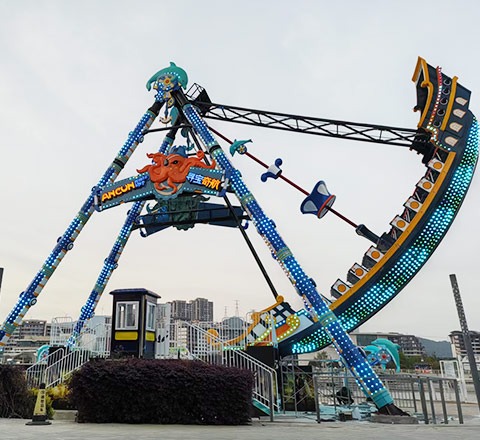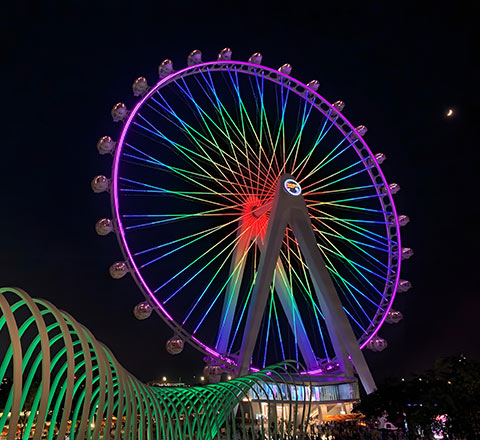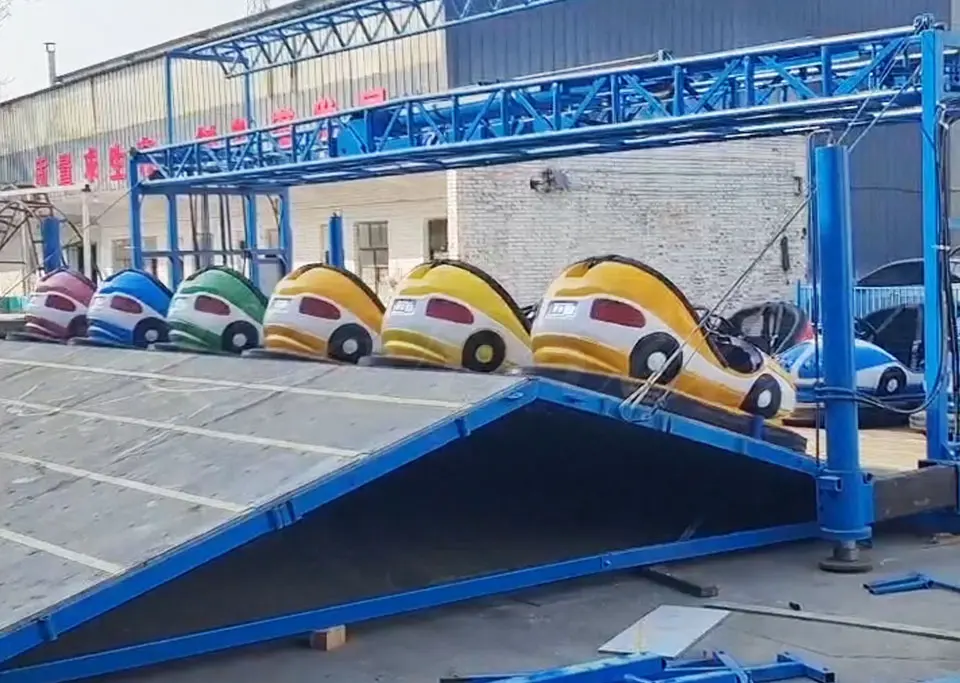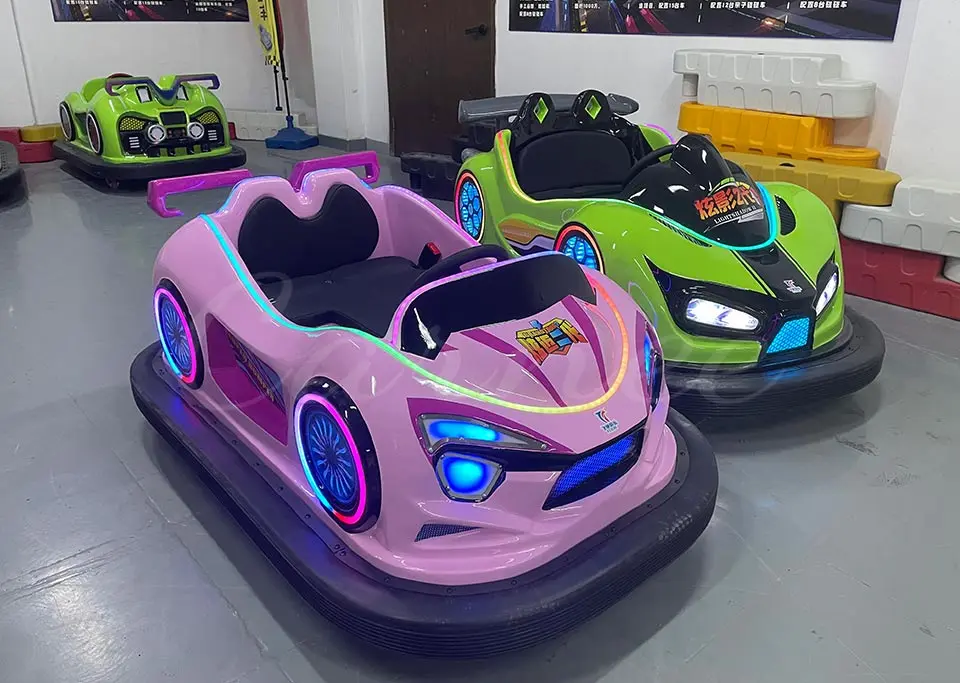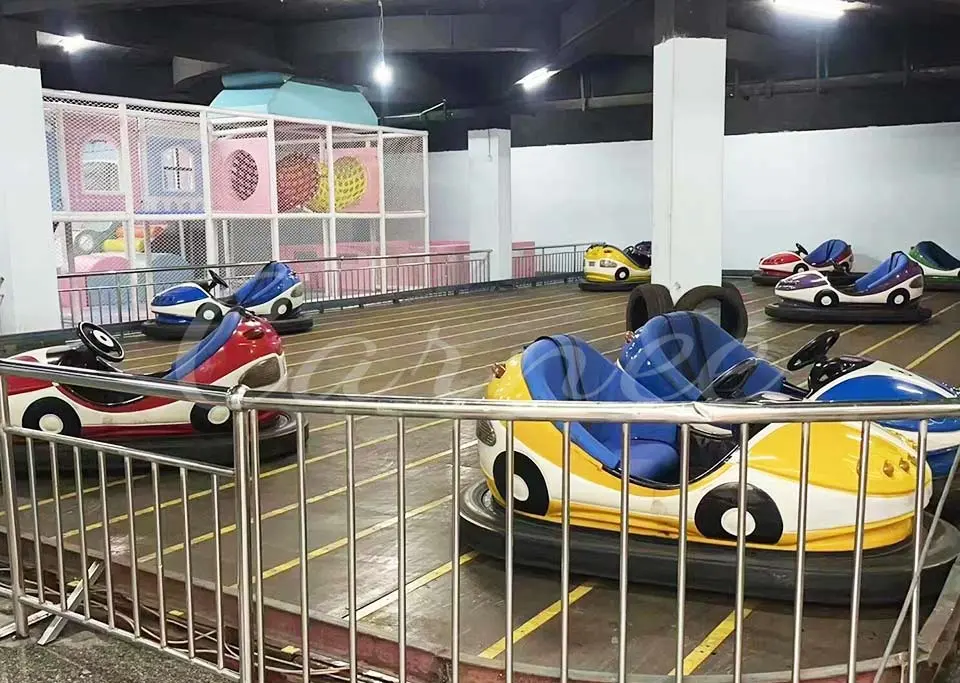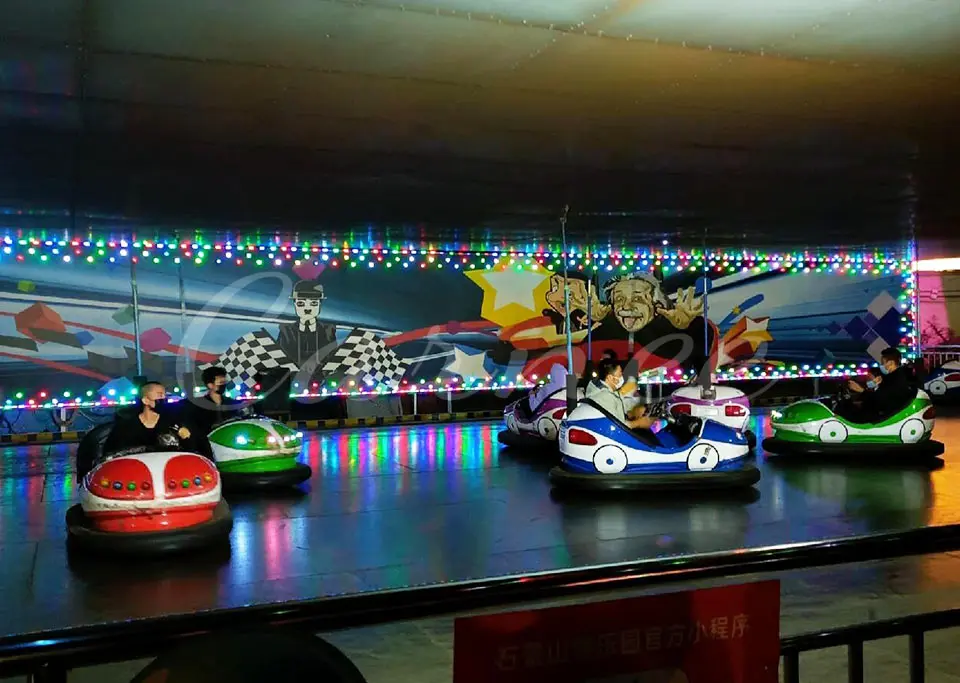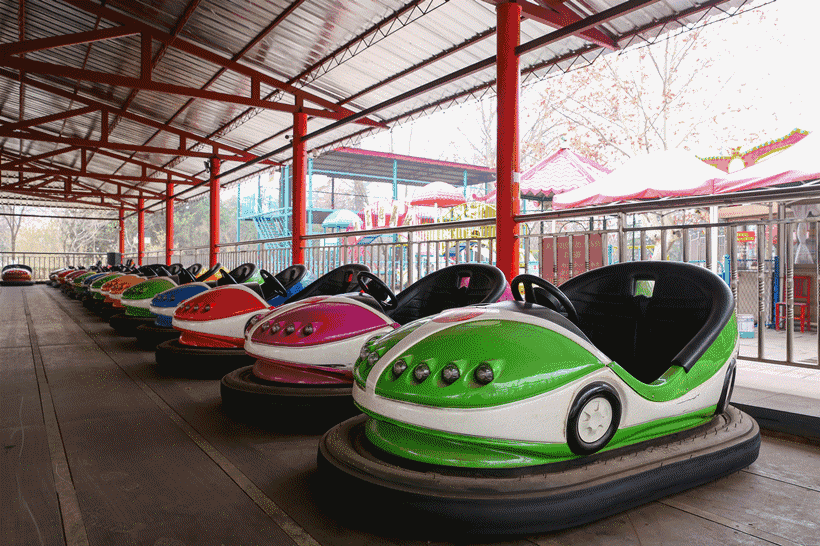
Bumper cars, also known as dodgems, are one of the most popular amusement rides worldwide. Their unique blend of fun, competition, and interaction makes them a must-have attraction for amusement parks, shopping malls, fairgrounds, and family entertainment centres.
But with so many bumper cars for sale on the market — different types, qualities, and price ranges — how do you make the right choice?
This bumper cars buying guide will walk you through everything you need to know:
- The different types of bumper cars (ceiling-net, ground-net, battery, portable)
- Key materials and craftsmanship to evaluate
- Safety standards you must check
- Price and second-hand considerations
- After-sales and operational strategies
By the end, you’ll know exactly how to select bumper cars that balance fun, safety, and profitability.
Types of Bumper Cars
Not all bumper cars are the same. Let’s break down the four main categories and their features.
1. Ceiling-Net Bumper Cars (Sky-net Bumper Cars)
- How they work: Powered by an overhead conductive grid, with electricity transferred via a pole on the car’s roof.
- Speed: 6–12 km/h.
- Pros: Stable power supply, continuous operation.
- Cons: Requires specialised ceiling installation and higher venue cost.
- Best for: Large indoor amusement parks.
2. Ground-Net Bumper Cars
- How they work: Powered by a conductive floor system.
- Speed: 8–15 km/h, faster than ceiling models.
- Pros: Stronger thrill factor, long operational lifespan.
- Cons: High installation and maintenance costs, fixed location.
- Best for: Theme parks and large amusement venues.
3. Battery-Powered Bumper Cars
- How they work: A Rechargeable battery system is inside each car.
- Speed: Typically 5–8 mph (8–12 km/h). Adjustable for children or adults.
- Pros: Flexible, no need for conductive floor or ceiling.
- Cons: Requires regular charging and battery maintenance.
- Best for: Outdoor plazas, parks, shopping centres, and indoor arenas.
4. Portable Bumper Cars
- How they work: Lightweight, movable models that operate on smooth surfaces without special flooring.
- Speed: 6–10 km/h.
- Pros: Easy setup, low investment, highly flexible.
- Cons: Less durable than fixed models, shorter-term use.
- Best for: Temporary fairs, carnivals, exhibitions, and mall pop-up events.
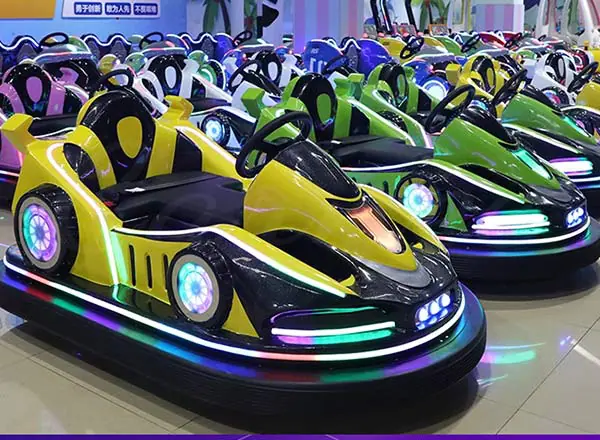
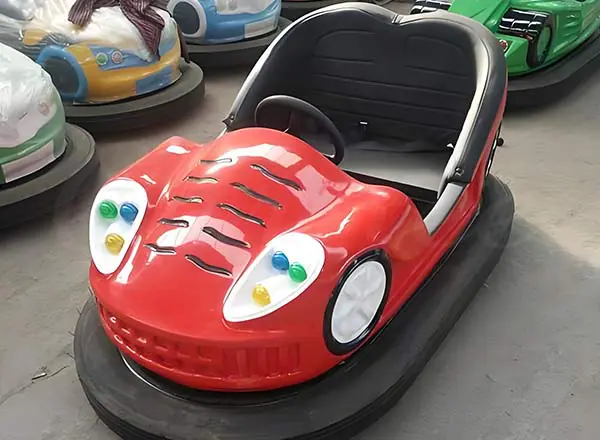
Bumper Car Comparison Table
| Type | Speed Range | Venue Requirements | Investment Cost | Best Applications | Key Pros & Cons |
| Ceiling-Net Dodgems | 6–12 km/h | Requires overhead grid | High | Indoor amusement parks | Reliable power, costly installation |
| Ground-Net Dodgems | 8–15 km/h | Conductive floor system | High | Large theme parks | Faster thrill, high maintenance |
| Battery Bumper Cars | 8–12 km/h | Any flat smooth surface | Medium | Parks, plazas, indoors | Flexible, needs charging |
| Portable Bumper Cars | 6–10 km/h | Regular smooth floor | Low | Carnivals, malls | Easy to move, less durable |
Bumper Cars Materials and Craftsmanship
When choosing bumper cars, durability and safety start with the materials and build quality.
- Steel chassis: Strong, impact-resistant, ensuring long-term safety.
- Galvanised steel: Adds corrosion resistance and a glossy finish.
- Reinforced fibreglass (FRP): Lightweight yet durable for body shells.
- Rubber bumpers: Essential for absorbing collision impact.
- Professional welding: Smooth joints, no cracks or gaps.
- Surface treatment: Sandblasting + spray painting = smooth, corrosion-resistant finish.
- Smart controllers: Allow speed adjustment by age group (3 mph for kids, up to 7–8 mph for adults).
Key Factors When Buying Bumper Cars
1. Manufacturer Credentials
Always choose a verified amusement ride manufacturer with:
- Production license & safety certifications
- Product compliance certificates
- Transparent warranty & after-sales support
👉 See more: Bumper Cars FAQ
2. Safety Features
- Secure seat belts and restraints
- Shock-absorbing bumpers
- Responsive braking systems
- Low centre of gravity for children’s models
👉 Related: Are Bumper Cars Safe for All Ages?
3. Size and Style
- Indoor venues: Smaller, lightweight cars.
- Outdoor parks: Durable, weather-resistant models.
- Kids: Cute, cartoon-like designs.
- Adults: Spacious seating, stronger motors.
4. Price and Value
The cost of bumper cars varies widely. Don’t just look at the lowest price — consider:
- Quality and lifespan
- Maintenance costs
- Manufacturer’s support
👉 Related: How Much Does a Bumper Car Cost?
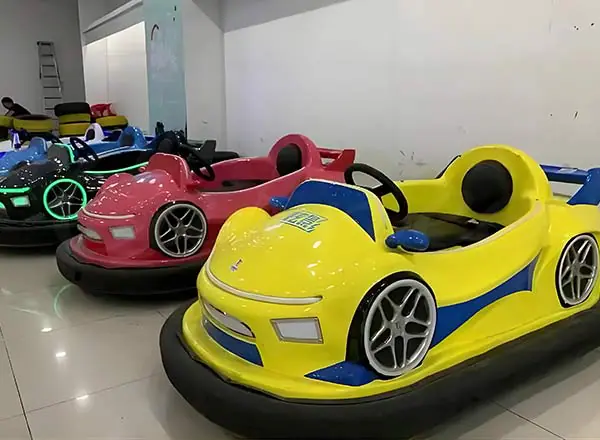
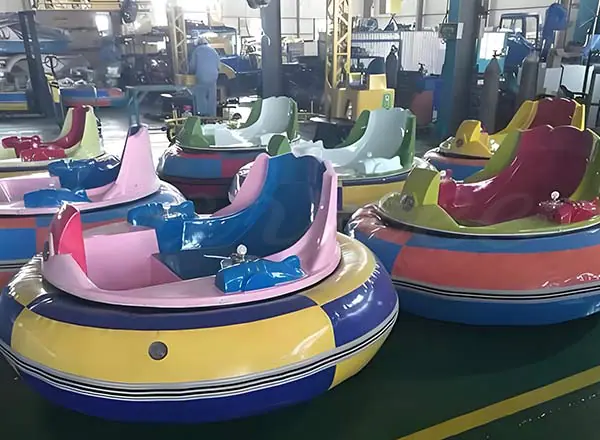
Second-Hand Bumper Cars: Pros and Cons
Many buyers are tempted by cheap used bumper cars. But is it really worth it?
| Pros | Cons |
| Lower upfront cost | Shorter lifespan (batteries degrade quickly) |
| Available for quick setup | Higher safety risks due to worn-out parts |
| No warranty or limited after-sales service |
✅ Expert tip: For long-term operations, always choose new bumper cars. The safety, durability, and after-sales support far outweigh the small savings of second-hand units.
After-Sales and Operational Tips
- After-sales support: Choose a manufacturer that provides spare parts, technical assistance, and fast response.
- Seasonal strategy: Maximise operations during summer/winter holidays, and consider mall partnerships or pop-up events during the off-season.
- Maintenance: Regularly check batteries, brakes, bumpers, and control systems for safe performance.
Conclusion
Choosing the right bumper cars is more than just a price comparison — it’s about balancing safety, durability, and profitability.
By carefully evaluating types, materials, safety features, and manufacturer reliability, you’ll secure equipment that brings continuous revenue and keeps riders safe.
At Carnee Rides, we’ve been manufacturing amusement rides for over 20 years, delivering projects in 80+ countries. Whether you need bumper cars for kids, adults, indoor arenas, or outdoor parks, we offer customized solutions with full after-sales support.
👉 Explore our full range here: Bumper Cars for Sale
Investing in quality bumper cars means investing in safety, fun, and long-term success for your venue.
If you have any interest or need of our product, just feel free to send inquiry to us!




